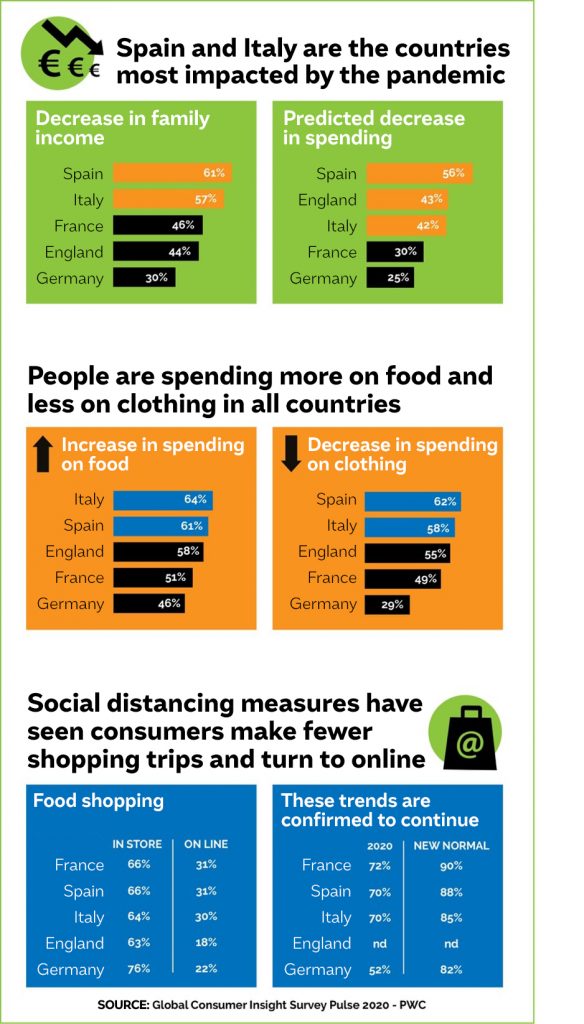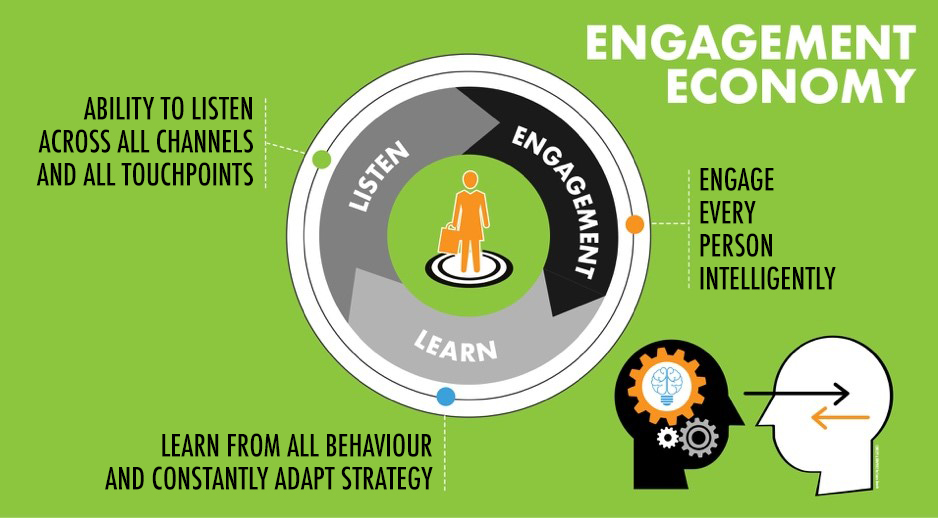Omnichannel management: welcome to the engagement economy
Omnichannel Retail
Today, consumer engagement requires brands to implement a highly integrated phygital (physical + digital) strategy. It is necessary to orchestrate communication across all touchpoint types, both real and virtual, in order to guarantee engaging experiences that are coherent within the context.
There can be no personalisation without coherence.
Omnichannel management is not simply a matter of managing in-store and online sales. It means identifying the most suitable technology for implementing new service and product logics that can seamlessly switch between physical and digital channels. All while tracing and monitoring every single interaction in order to analyse feedback and improve both offering and relationship. This is the only way to design engagement and loyalty solutions that guarantee the most gratifying, coherent and relevant experience possible for consumers. It is especially important now if brands are to remain competitive in the new normal.
The impact of the pandemic on consumers
The evolution of the Covid-19 crisis brought with it significant changes both to consumer wallets and their behaviour.
In the Global Consumer Insight Survey Pulse 2020, PwC analysts observed a decrease in household income in European countries (with Spain and Italy most impacted by the pandemic) with a consequent reduction in purchasing power. The long tail of the health crisis is driving Europeans to purchase more foodstuff and reduce spending on clothing and footwear. To avoid the risk of infection in stores, consumers tend to shop less frequently, even for food, making the most of e-commerce and other solutions which, in addition to traditional delivery, include in-store collection (BOPIS – buy online, pick up in-store) or curbside pickup. These changes will persist as we move into the new normal.

E-commerce is no longer daunting. Quite the opposite…
In 2020, more than a billion people chose to purchase online. The pandemic has legitimised e-commerce at a global level (sales increased by 20% in the first quarter and by 71% in the second quarter, while the third trimester saw an increase of 55% despite stores reopening). The big picture provided by analysts for the final quarter of 2020 confirms the economic success of the various cyber days and their unmissable promotions. Digital consumers spent more than 270 billion dollars during Black Friday and Cyber Monday alone (source: Salesforce Research 2020 “Explore Cyber Week”).
Omnichannel management: the diversification of interaction channels
Aside from the various lockdowns, Covid-19 imposed a new regime of virtual interaction that profoundly changed the nature and rules of interaction and communication between customers and brands. In Italy alone, 58% of consumer interaction with brands took place virtually (compared to 41% in 2019), through multiple channels:
- 93% email
- 76% online portals
- 71% mobile apps
- 70% online chats/help desk
- 61% social media
- 59% SMS
- 48% online communities
- 25% video chat
- 24% voice assistant
In general, over half of consumers (61%) have stated they wish to spend more time online even after the pandemic and almost half again (47%) state that Covid-19 is changing their relationship with technology (source: “The State of Connected Customer” Salesforce 2020). This digital turning point for customers requires brands to shift their perspective too. So, in this new normal, how can brands manage an retail omnichannel strategy that suits the consumer evolution?
Consumers want more engagement from brands
According to researchers, during this period of constant stopping and starting, people have learned to evaluate the way that brands design their customer journey. The quality of the experience that brands offer is just as important as the quality of products and services. This was confirmed by:
- 79% of baby boomers
- 81% of Gen X
- 83% of millennials
- 75% of Gen Z
A total of 66% of customers now expect empathic, personalised and engaging interaction from brands but only 37% feel that brands are working in that direction, with just over 3 out of 10 consumers (34%) saying they have received personalised experiences from brands. Over half of customers (54%) want to see improvement to the engagement methods used by brands with 8 out of 10 consumers (80%) stating that they would be willing to pay more in exchange for a better and more satisfying experience that would lead them to recommend the products and services they purchased.
Brand identity must be multichannel
The starting point is understanding that brands have an identity for consumers, regardless of whether they are purchasing online, sending an email or scrolling their Instagram feed. The fact remains, however, that the majority of brands still view the consumer as a kaleidoscopic mix of fragmented random data. This is because all the information they have about consumers is split between the various business units.
And customers are well aware of this: over half (57%) believe that the sales, customer service and marketing teams do not share information and 65% underline that they have often had to repeat the same things to different interlocutors before receiving an answer to their question. The consequence of this dysfunctional management is incoherent communication. One example is when an email, app or online pop-up recommends that a consumer buy a product that they have just purchased. In short, it is clear that there can be no personalisation without a coherent omnichannel system.

Omnichannel management: from strategy to implementation
The latest IDC research highlights that 7 out of 10 consumers have listed a differentiated experience not only as a positive experience but as a key factor in driving loyalty. Analysts focus attention on the increasingly bold initiatives proposed by brands who, over these past months, have continued to diversify their profiling and engagement methods for interacting with clients both near and far, using every physical and digital point of contact as an opportunity to enhance and improve the customer experience. The more forward-thinking retailers, for example, have improved and diversified touchless solutions in order to allow customers to navigate product information when in-store.
Omnichannel is a chance to reinvent the role of the physical store
Upgraded digital store designs and in-store radio programming are two tools that have been installed to welcome clients when entering stores. The store is not merely a place for trying and collecting products, it is a one-of-a-kind experiential theatre that can engage all five senses. By blending creativity and technology, brands can surprise their clients with new activity linked to more sophisticated and appealing forms of infotainment and gamification. Forget price and product policies, today’s challenge is guaranteeing a quality customer experience. In spite of the doomsayers who predict the disappearance of the physical store, experts maintain that only boring stores will meet their end. The store will continue to be attractive if it is designed to be a multi-experiential hub which, unlike online solutions, can operate on multiple emotional levels. Every square metre of the store can become a potential interaction and business touchpoint. Interactive installations, connected and communicating objects, geolocalisation solutions and apps, of course, but what about smart shelves, tables and mirrors that help brands to both provide and gather information?
From CRM to CEM: Experience Management in the new normal
In the engagement economy era, omnichannel management is a system that will:
- Gather everything a brand knows about an individual into a single coherent identity
- Present a brand and its products and services in a coherent way across all channels
- Adapt and personalise all brand communication automatically for each client
The key is developing an overall strategy instead of adding on extra technological solutions. Retail brands must implement better management, adopting a single platform that allows them to manage any type of online and offline touchpoint and fast-track any information received in order to transform CRM into a Customer Experience Management system with added brand value. By implementing a shared platform, the sales (store and e-commerce), marketing and customer care teams will be able to share information and analyse it in real time in order to understand and recognise each client and give them what they want, when they want it, where they want it and in the way they want it. Because personalisation translates into loyalty.
Laura Zanotti

